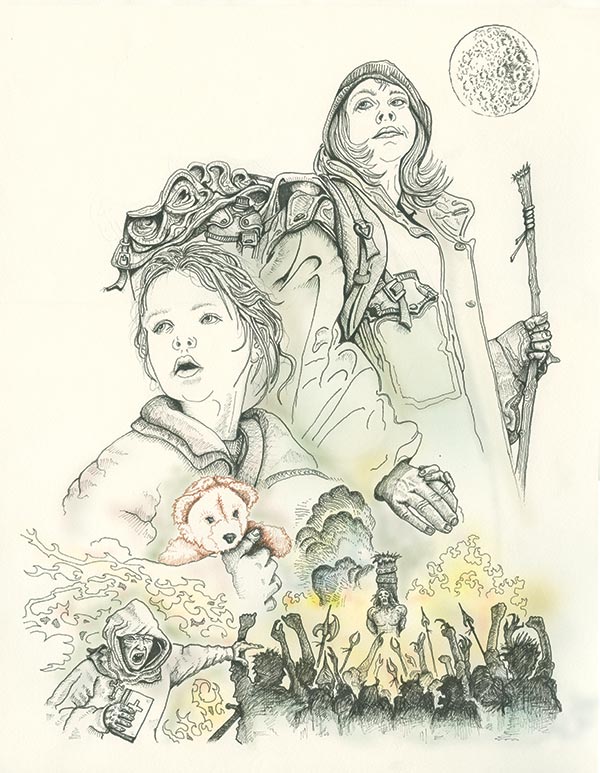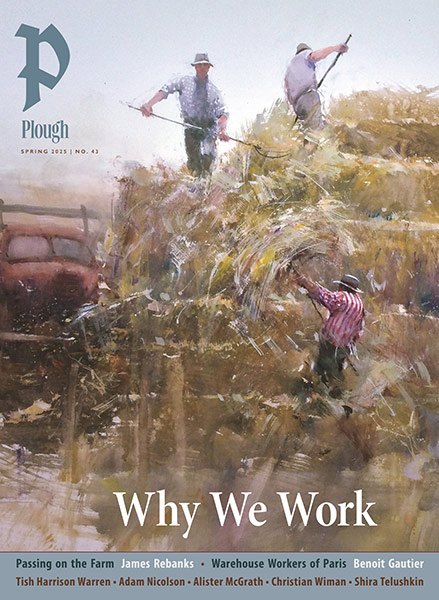Subtotal: $
Checkout-

Pete Seeger
-

Family and Friends Issue 1
-

The Best of Classic Children’s Bibles
-

Purity in a Porn Age
-

Fighting Drought with Trees
-

The Jesus of the Four Gospels
-

Eberhard Arnold’s Unsettling Message
-

Käthe Kollwitz’s Pietà
-

We Are Not Bystanders
-

Alarmed by Jesus
-

Poem: I Cannot Love What You Are
-

Love in a Leper Colony
-

Insights on the Sermon on the Mount
-

The Hard Work of the Gospel
-

The Martyrs of Alcatraz
-

Becoming a People
-

The Dragon and the Coffee Pot
-

Was Bonhoeffer Willing to Kill?
-

Poem: For One Bereaved
-

Digging Deeper: Issue 1
-

Editors’ Picks Issue 1

Katharina Hutter
Heroine of the Radical Reformation
By Jason Landsel
September 2, 2014
Available languages: Français
On a summer evening in 1532 in the mountains of the South Tyrol, Anabaptist missionary Jakob Hutter baptized a young servant woman, Katharina Purst. She thus became one of thousands who were joining the Radical Reformation movement which had begun five years earlier in Switzerland. Dubbed “re-baptizers” or Anabaptists because of their practice of baptizing adults as a sign of voluntary discipleship, they quickly became the target of fierce persecution by both Catholic and Protestant rulers. (Thousands would be martyred over the next two decades.) Katharina was soon participating in the Anabaptist underground, bringing food and supplies to fellow believers hiding in the forests and remote mountain huts.
Three years later, in May 1535, Katharina married Jakob, who was now the leader of a growing community. Shortly afterward, the authorities evicted a large group of them from their homes, and the newlyweds led the refugees in a trek across the countryside. (This is the scene shown in my artwork.) According to a contemporary account: “They were driven into the field like a herd of sheep. Nowhere were they permitted to camp until they reached [an outlying village].…There they lay down on the wide heath under the open sky with many wretched widows and children, sick and infants.”
Jakob begged their case to the local governor:
Now we are camping on the heath.…We do not want to wrong or harm any human being, not even our worst enemy. Our walk in life is to live in truth and righteousness of God, in peace and unity. We do not hesitate to give an account of our conduct to anyone. But whoever says that we have camped on a field with so many thousands, as if we wanted war or the like, talks like a liar and a rascal. If all the world were like us there would be no war and no injustice. We can go nowhere; may God in heaven show us where we shall go.
The response to Jakob’s letters was an intensified manhunt for him and Katharina. The couple spent the next four months moving from one safe house to the next, baptizing, encouraging demoralized believers, distributing donations to widows and the needy, and arranging for those in danger to flee to safety. Katharina seems to have built up a network of women who provided her and Jakob with shelter and assistance.
But in November, the two were arrested by officers of the bishop of Brixen, betrayed by an informer. Katharina was immediately separated from Jakob; so ended their married life together five months after it began. Katharina was still in prison in February when she would have heard that her husband, who had endured horrific tortures, had been burned at the stake in Innsbruck. According to one source, she was expecting a baby.
Perhaps because her pregnancy resulted in relaxed security, in April Katharina managed to escape from prison; for the next two years she disappears from the historical record. In 1538 she was recaptured in her old mission ground. This time she was executed immediately, probably by drowning. She was around thirty years old.
Her last words have not come down to us, but letters from Jakob survive in which he fittingly sums up his and Katharina’s shared calling: “I hope that God’s fire will be so brightly kindled and his work so well established that even great floods and torrents of rain will not be able to quench the fire!”

Jason Landsel, Katharina Hutter
The artist writes: This portrait of Katharina Hutter shows her as she leads a group of Anabaptist families fleeing from persecuting government forces. The scene is viewed through the eyes of the child she is leading. Both are in contemporary garb as a reminder that Katharina is not a figure of distant history but rather lives on as a sister in the faith.
Already a subscriber? Sign in
Try 3 months of unlimited access. Start your FREE TRIAL today. Cancel anytime.
































Randy Hall
We are counselled in God's word to buy from him, "Gold refined by fire" (Revelation 3:18). Katharina and Jakob understood the eternal value of the Gospel of the Kingdom of God. Their sacrifice for the living of a life of genuine faith showed forth the full value of being willing to give up everything, in order to gain everything. May such an example reach through the ages and warm our hearts and spirits to live life today with similar dedication to our God.
Christopher Russell
The Plough's 'Daily Dig' for today is from Kahlil Gibran. How would that have gone down with Peter Riedemann and Katharina Hutter? The message I take is that we need to understand the early Anabaptists in their 'historical context'. Pity.